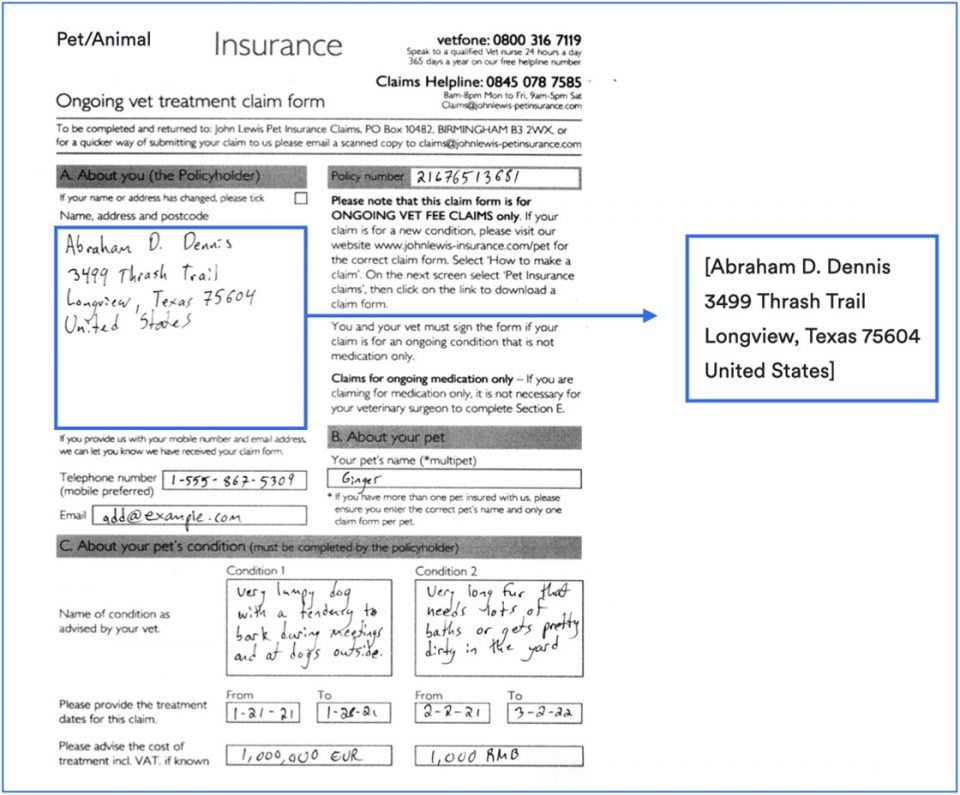Unlocking the business value in documents: what are the different document types?
In the world of enterprise data management, business documents come in all shapes and sizes—each with its own characteristics and challenges.
But the differences between structured, semi-structured, and unstructured documents cause a world of confusion. This blog article unravels the distinctions between these document types.
Jun 01, 2023 by Craig Woolard

Understanding the differences between “structured,” “semi-structured,” and “unstructured” documents is crucial for effective information processing and decision-making.
In this article, we delve into the distinctions among these document types, shedding light on their unique attributes and the implications they have for businesses. You will also learn that “less structured” documents require significantly more advanced technology.
That’s where IDP comes in. With Intelligent Document Processing (IDP), businesses can at last “unlock” the business value “stuck” in unstructured documents. Gain a clear understanding of the many types of documents and harness the power of structured data. Let’s dive in.
Keep in touch
“Structured” vs. “less structured” documents
Essential data can be organized in a variety of ways, and this presents all kinds of challenges.
For one, the terminology and industry jargon cause a lot of confusion. To simplify it, there are two ways information can be organized in a document: “structured” or “less structured.” The table below breaks down the most common business documents by type:
| Structured documents | Semi-structured documents | Unstructured documents |
|---|---|---|
| Printed forms | Invoices | Emails |
| Passports | Receipts | Social Media posts |
| Tax Documents | Reports | Contracts |
For example, there’s a lot of “unstructured data” packed away in business contracts.
You might be unable to stick a contract into a database and run queries against it. But you can use AI to extract data points—such as “supplier name,” “supplier address,” “contract termination date,” and other pieces of critical information—from those documents.
But how can enterprises know if documents have potential value or not? That’s the other challenge to address with business documents.

The challenges with structured, semi-structured and unstructured documents
These terms can often be confusing because all documents (structured, semi-structured, and unstructured) are generally considered “unstructured data.”
They all require processing with AI before you can store or query their contents in structured formats. Let’s quickly examine the major challenges businesses confront with each document type:
1. Structured documents
With “structured” documents, such as a fixed form, you already know what you will find and where to find it within the document.
You already know what you will find and where to find it within the document.
2. Semi-structured documents
On the other hand, the layout is a lot more flexible and prone to change in a “semi-structured” document, such as an invoice. Even though you may already know what you will find in a semi-structured document, you will have no idea where to find it or how to predict the location of the essential data.
Even though you may already know what you will find…you will have no idea where to find it or how to predict the location of the essential data.
3. Unstructured documents
To make matters worse, “unstructured” documents, such as emails, social media posts, and contracts, are completely “free-form” and massive in volume. These documents are the most challenging to predict. You have no idea what you will find or where to find it. Just by sheer volume, unstructured documents need rich language understanding to “unlock” the potential business intelligence they likely have.
You have no idea what you will find or where to find it.

How does intelligent document processing overcome these challenges?
In intelligent document processing (IDP), documents are categorized based on their structure (or lack thereof) and by the predictability of their content.

Flexible documents require flexible AI models to understand and extract the data. Fixed forms are easy to predict and require less flexible AI. The more flexible documents you have, the more sophisticated AI you need.
No matter what type of document your organization processes, IDP can help you unlock the business value in any document. In the next section, we’ll take a closer look at the differences between structured, semi-structured, and unstructured documents.
1. Examples of “structured” documents
Nearly every industry heavily relies on structured documents in one form or another.
These include documents containing machine-printed text designed to be scanned by computers, such as identification records, passports, ID cards, and driver’s licenses.

Structured documents also typically involve fixed forms, including tax forms, questionnaires, surveys, tests, medical records, and insurance forms. For a comprehensive list of the most common examples of structured data in business documents, check out the table below:
| Document type | Description |
|---|---|
| Printed forms | Structured documents designed for collecting specific information, often used for applications or surveys. |
| ID cards | Official identification cards issued to individuals, containing structured data such as name and photo. |
| Passports | Travel documents issued by governments, containing structured data including personal and travel details. |
| Tax forms | Documents used for filing taxes, containing structured fields for reporting income, deductions, and more. |
| Medical records | Structured documents containing the patient’s medical history, diagnoses, treatments, and other healthcare data. |
Simply put, structured documents require less advanced technology, which can benefit organizations that are reliant on older heritage document processes and legacy data systems.
However, these are not the only organizations that reap the benefits. Because structured documents are easier to process, nearly every industry can benefit from the value they store.
It’s also worth mentioning that even with very structured documents, there are still many areas where AI can help. Those include detecting the fixed elements in a larger page (like finding the ID card scan as part of a larger page), image cleanup, and processing difficult input such as handwriting.
2. Examples of “semi-structured” documents
Since semi-structured documents do not have “fixed” or standardized layouts, organizations handling them may need help predicting where the information of interest is located. Examples of semi-structured documents include invoices, purchase orders, bill-of-materials (BOM), receipts, and loan applications.

Check out the table below for a comprehensive list of common business documents with semi-structured data:
| Document type | Description |
|---|---|
| Invoices | Invoices often contain structured fields along with unstructured information. They typically include structured data such as invoice number, date, and amount, while also incorporating unstructured information such as item descriptions and billing notes. |
| Purchase Orders | Purchase orders typically have structured fields for order number, quantity, and price, but may also include unstructured information like special instructions or terms and conditions. |
| Customer Surveys | Surveys may have predefined questionnaires but allow for open-ended responses. They provide structured data through predefined questions and response options, along with unstructured data through customers’ open-ended feedback and comments. |
| Financial Statements | Financial statements consist of structured financial data, such as balance sheets and income statements, but may also include narrative sections with qualitative information that provide insights into the financial performance of a company. |
| Product Safety Data Sheets (SDS) | Product Safety Data Sheets (SDS) provide information about the hazards, handling, storage, and emergency response measures for specific chemical products. While SDS documents have a defined structure, the content within each section can vary based on the specific chemical and regulatory requirements. This allows manufacturers to accommodate the varying properties and hazards of different chemical substances. |
| Certificate of Analysis (CoA) | Formal documents providing detailed information about the quality and composition of a product or material, typically including structured data such as batch/lot numbers, test results, specifications, and analytical information. |
| Legal Contracts | Legal contracts have structured sections for parties, terms, and conditions, but may also contain unstructured clauses and appendices. Contracts include structured data with legal obligations and agreements between parties, while unstructured clauses and appendices provide specific details, exceptions, or additional terms that may vary from contract to contract. |
3. Examples of “unstructured” documents
Unstructured documents are “unfixed” and do not follow a templated design, a fixed layout, or “rules.”

The table below lists some of the most common business documents with unstructured data:
| Document type | Description |
|---|---|
| Emails | Emails contain unstructured data such as free-form text conversations, attachments, and metadata. |
| Customer Feedback | Customer feedback documents, including surveys, comments, and reviews, contain unstructured data expressing opinions, suggestions, and experiences shared by customers. |
| Support Tickets | Support tickets in customer service systems often contain unstructured data in the form of customer inquiries, problem descriptions, and support agent responses. |
| Social Media Messages | Social media messages, including direct and private messages, contain unstructured data consisting of customer inquiries, feedback, complaints, and other interactions with a business on social media platforms. |
| Voice Transcripts | Voice transcripts provide unstructured data by converting recorded phone calls or voicemail messages into text, capturing customer inquiries, sales discussions, or support interactions in a text-based form. |
How IDP transforms any document into structured data
Legacy technologies like robotic process automation (RPA) and optical character recognition (OCR) can find the same data points in the same place every time (structured documents), but they struggle to do anything else.
When it comes to more flexible semi-structured and unstructured documents, RPA and OCR’s “brittle” interfaces are incapable of “seeing” the data points—so they simply break down, which stops your automation dead in its tracks.
Intelligent document processing (IDP) is a type of workflow automation that goes beyond the limitations of traditional RPA and OCR. It uses next-gen artificial intelligence (AI), machine learning (ML), and natural language processing (NLP) to “read” documents like a human and transform unstructured documents into structured data.
Flexible documents require flexible AI models to understand and extract the data. The more flexible documents you have, the more sophisticated AI you need.
IDP can also integrate structured data with existing software, databases, and legacy RPA tools—creating the most advanced hyper-automation solution for the global challenges of rapidly growing unstructured data.

Intelligent document processing to the rescue
No matter which business document your organization handles, IDP scans content and interprets context—along with the author’s intent—to streamline the entire document workflow with above-human accuracy. Here are the key IDP use cases to know about:
1. Different file formats
Business documents come in every format, including paper forms, PDFs, images, and emails. The AI deployed in intelligent document processing can read all of them—with a clear understanding of every word—and with greater accuracy and speed than traditional automation software can offer.
2. Scanned documents
Companies around the globe struggle to extract information from scanned PDFs. This is especially the case with handwriting. However, IDP can intelligently classify, capture, and process stockpiles of business-critical data locked away in archives of scanned unstructured documents, regardless of the quality of the scan, file type, language, or handwriting legibility.
3. Handwriting & signatures
Optical character recognition (OCR) recognizes characters, letters, and numbers, regardless of the font. But as a standalone technology, OCR does not recognize handwriting accurately. But, when integrated with AI, cursive and signature detection improve significantly with IDP.

4. Invoice processing
Every vendor uses a unique invoice, and companies receive thousands of invoices with different requirements—each with critical data that must be manually keyed into an AP system. An invoice automation platform with sophisticated AI, can analyze invoices, find key data points, and automatically update existing systems.
5. Email processing
Emails have some fixed properties, so they could be considered semi-structured documents. But the valuable information is contained in the body of the email and in the attachments. This essential data is generally unstructured. An email automation platform with intent analysis can analyze incoming emails, detect the sender’s intent, extract the data, automatically update relevant systems, and notify the sender about the outcome.
6. Contract automation
Contracts are data-packed documents with critical business intelligence. Automation Hero’s IDP unlocks the business value in contracts with a certified, secure environment driven by industry-leading AI. Only Automation Hero’s sophisticated AI recognizes styles of handwriting and goes beyond plain text to extract all critical data points stuck in contracts in just seconds.
Conclusion
Structured data facilitates efficient analysis and supports business intelligence by enabling organizations to derive crucial insights quickly.
The real challenge is extracting the unstructured information and making it actionable. This is the only way to discover the intelligence locked away in unstructured business documents.
Structured data facilitates efficient analysis and supports business intelligence by enabling organizations to derive crucial insights quickly.
How can enterprises know whether or not data has potential value if there’s too much “friction” to unlock it? The answer is Intelligent Document Processing (IDP).
Unlock the business intelligence in your documents with an AI-driven automation platform now
Learn how we helped Markerstudy reduce its claims processing time by 40%. Additionally, learn how we reduced total claim processing time by 80% for another multinational insurance partner — cutting down manual tasks from 10 minutes to just two minutes per claim.
- Speak with an expert — tell us about your specific use case.
- Get a personalized demo — schedule a demo, and our Heroes will get in touch!
Close Window
Automation Hero will track how you use the emails (e.g., at what time you open which part of the emails) sent by Automation Hero. If you have provided a separate declaration of consent that cookies for tracking your usage of the website and/or apps may be placed on your device, Automation Hero will also connect the information about your use of Automation Hero’s websites and apps (e.g., which information you open) collected by the tracking cookie to such information in so far as possible. Automation Hero will analyze such information, to identify your interests and preferences and to communicate with you in a more personalized and effective way, e.g. by providing information that you are likely interested in, like information on new technologies or products of the Automation Hero group that are likely relevant to you.
